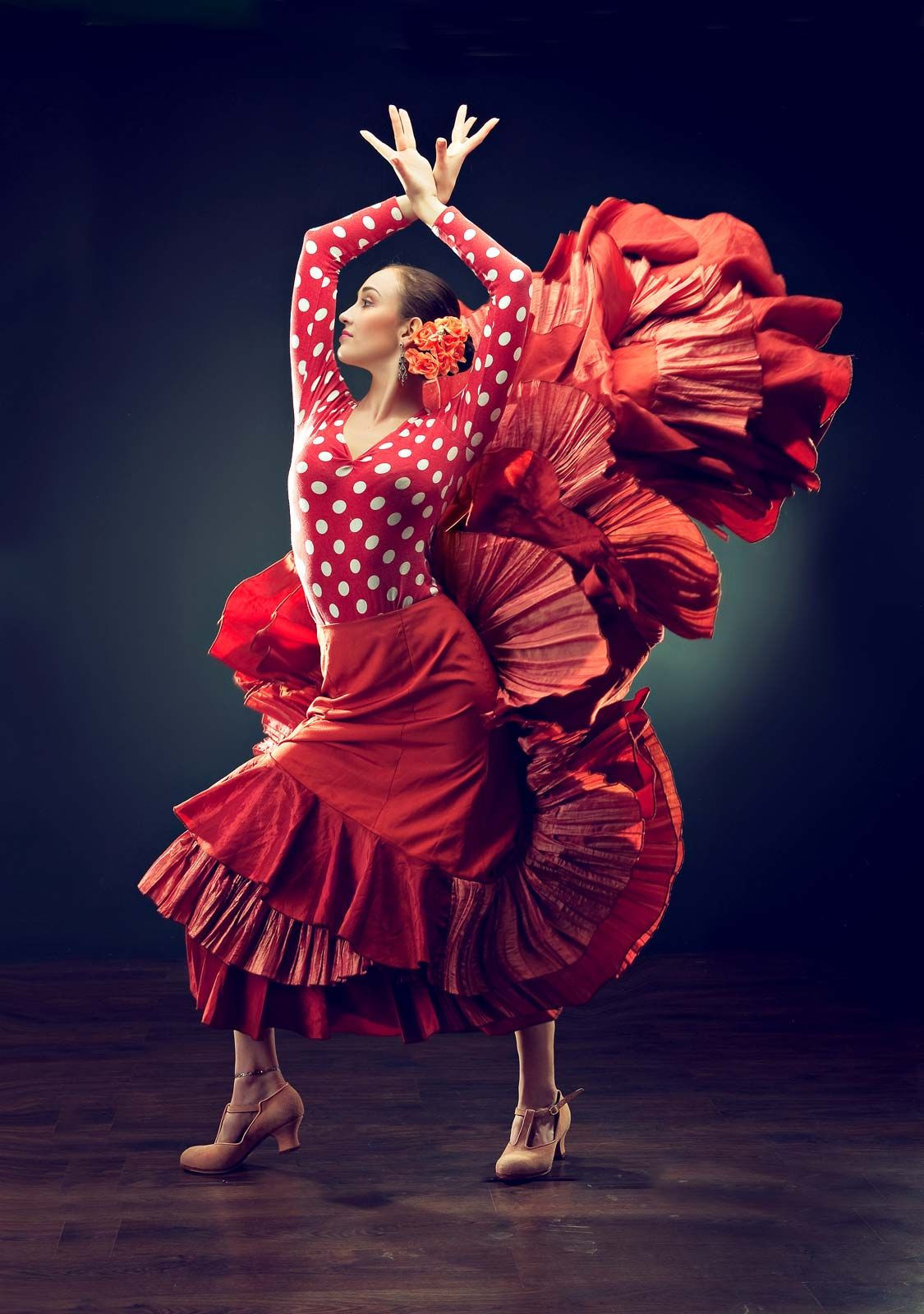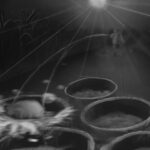Flamenco, a captivating art form of song, dance, and instrumental music, is deeply intertwined with the cultural identity of Spain, particularly Andalusia and the Roma (Gypsy) communities, known locally as Gitanos. While its origins remain somewhat shrouded in mystery, flamenco’s roots trace back to the migration of Roma people from Rajasthan, India, to Spain between the 9th and 14th centuries. These travelers brought with them a rich musical heritage, including instruments like tambourines and castanets, alongside a vibrant repertoire of songs and dances. In Spain, this heritage fused with the existing Sephardic Jewish and Moorish cultures, culminating in the unique and passionate expression we know today as Flamenco Dancing In Spain.
The Soul of Flamenco: Cante, the Song
At the heart of flamenco lies cante, the song. Flamenco songs are traditionally categorized into three main forms: cante jondo (deep song), cante intermedio (intermediate song or cante flamenco), and cante chico (light song). Cante jondo, often built upon a complex 12-beat rhythm, is considered the oldest and most profound form. It delves into intense emotions, exploring themes of death, sorrow, religious questioning, and deep anguish. Cante intermedio acts as a bridge, blending elements of Spanish musical styles, notably the lively fandango, into the flamenco tradition. Lastly, cante chico, while technically demanding in its own right, adopts a simpler rhythmic structure and a lighter emotional tone, often focusing on themes of love, humor, and the joys of the countryside. Each style of cante is identifiable by its distinct rhythm and chord progressions; however, different cante forms can share rhythms, differentiated by nuances in accentuation, subtle variations, and emotional depth.
The lineage of many cante styles is discernible. The solemn soleares, originating from the ancient cañas, gave rise to the more cheerful alegrías, which in turn led to other lighter styles such as bulerías. Alboreás are traditionally reserved for wedding celebrations, considered unlucky for other occasions. Forms like fandangos grandes were adapted from Spanish folk music and dance, evolving into a more serious character than their folk origins and spawning styles like malagueñas and the Moorish-influenced cartageneras. Latin American influences emerged in later flamenco genres such as rumbas gitanas and colombianas. Cantes grandes, deeply rooted in Gitano flamenco, include siguiriyas gitanas, saetas (adopted from Spanish religious processions), and martinetes. Martinetes, originating in the forge environment, use the rhythmic hammering on the anvil to echo the pain and isolation experienced by the perpetually marginalized.
Baile: The Expressive Dance of Flamenco in Spain
While song is central, baile, or dance, has risen to prominence in flamenco, particularly after the mid-19th century. Traditionally, flamenco song was accompanied by guitar music, the rhythmic palo seco (a stick struck on the floor for timekeeping), and a dancer who blended choreographed steps with improvisational flair. Although always performed with accompaniment, baile has become the most visually striking and emotionally resonant aspect of flamenco dancing in Spain.
 Passionate flamenco dancer in motion
Passionate flamenco dancer in motion
The dancer (bailaor for male, bailaora for female) embodies the narratives sung by the cantaor (singer). These stories often recount the experiences of an outsider community within the dominant Spanish society. The baile itself is a captivating display of fluid, stylized, and deeply personal movement. It incorporates intricate arm movements (braceo), expressive hand and finger gestures (florea), dynamic footwork (zapateado), and powerful heelwork (taconeo), frequently showcased in extended solo sections known as solea. Male dancers are often celebrated for their complex footwork, while female dancers, traditionally adorned in elaborate ruffled dresses, emphasize the grace and expressiveness of their hands and upper body. The guitarist (tocaor) is crucial, maintaining the rhythmic framework (compás) that guides and responds to the dancer’s rhythmic nuances.
A truly immersed flamenco dancer can reach a state known as duende after a performance of 15 to 20 minutes. Duende is a state of intense concentration and almost trance-like emotion, described by Federico García Lorca as los sonidos negros (“the dark sounds”) taking over the performer’s body. This heightened state is amplified by rhythmic hand clapping and enthusiastic vocalizations (jaleo) from the audience and fellow performers. For Gitano flamenco artists, cante jondo is considered a form of prayer, and in duende, the dancer communicates with both the audience and a higher spiritual realm. Intriguingly, the gestures within the profound baile grande bear a striking resemblance to classical Hindu dance from the Indian subcontinent, hinting at the ancient origins of flamenco’s movement vocabulary.
A History of Flamenco Dance in Spain: From Private Gatherings to the World Stage
The golden age of flamenco is generally recognized as spanning from approximately 1780 to 1845. During this period, cante held the central position in flamenco performances, with dance and musical accompaniment playing supporting roles. Initially, flamenco was primarily an intimate, family-centered activity, often performed outdoors within the Roma community, focused on the raw emotion of cante. This began to change in 1842 when Silverio Franconetti established the first café cantante, Café sin Nombre, in Seville. This establishment, and the numerous others that followed in major Spanish cities like Granada, Córdoba, and Seville, shifted the focus towards musicians and dancers. It was during this era that the singer’s role began to become secondary to the visual spectacle of dance.
While these commercial venues provided livelihoods for many flamenco performers for the first time, they also sparked debate about the potential dilution of an authentic, indigenous art form. Intellectuals like Lorca and composer Manuel de Falla sought to preserve the purity of flamenco. In 1922, they organized the first flamenco competition, advocating for cante primitivo andaluz (primitive Andalusian cante). This timely effort to prevent the perceived degradation of authentic folk art effectively elevated flamenco to a more sophisticated urban audience and fostered the thoughtful evolution of the art form within a modern context.
The 20th century saw the rise of legendary flamenco figures such as La Argentina (Antonia Mercé), Vicente Escudero, Carmen Amaya, La Argentinita (Encarnación López), José Greco, and Pilar López, along with renowned troupes like those of Antonio and Rosario, and Ximénez-Vargas. Classically influenced flamenco artists such as Antonio Gades, Christina Hoyos, José Greco II, and Lola Greco further expanded the boundaries of flamenco. Gades, particularly through his collaborations with filmmaker Carlos Saura, introduced flamenco to a global audience, showcasing its potential as a dynamic performance art through innovative choreography.
Contemporary flamenco artists, including Eva la Yerbabuena, Joaquín Cortés, Antonio Canales, Belén Maya, and Juana Amaya, continue to innovate, developing new rhythmic approaches and integrating them into extended narrative theatrical productions where rhythm takes center stage in the dance. In recent decades, flamenco has also embraced fusion, influenced by broader musical trends, ensuring its continued evolution and relevance in the 21st century.

